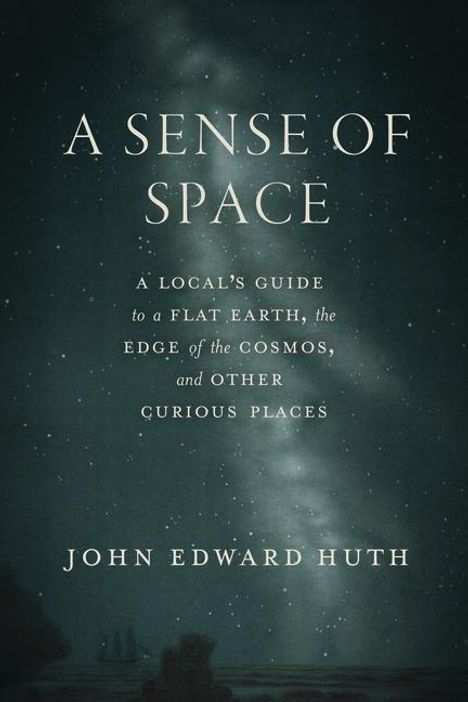John Edward Huth: A Sense of Space, Gebunden
A Sense of Space
- A Local's Guide to a Flat Earth, the Edge of the Cosmos, and Other Curious Places
(soweit verfügbar beim Lieferanten)
- Verlag:
- University of Chicago Press, 11/2025
- Einband:
- Gebunden
- Sprache:
- Englisch
- ISBN-13:
- 9780226844428
- Artikelnummer:
- 12214097
- Umfang:
- 368 Seiten
- Gewicht:
- 454 g
- Maße:
- 229 x 152 mm
- Stärke:
- 33 mm
- Erscheinungstermin:
- 12.11.2025
- Hinweis
-
Achtung: Artikel ist nicht in deutscher Sprache!
Klappentext
"From global navigation to natal charts and from memory palaces to particle accelerators, a fascinating account of humanity's attempts to imagine new spaces. How do you conceive of space? To start, reflect of how many spatial terms appear in your everyday language. If you're unsure what that means, you might ask your higher-ups. Or your closest friend. Where are we going with all this? To get on at the ground floor, ask writer and physicist John Edward Huth, who offers here a fascinating exploration of how changing scientific models of space change our social perceptions. With accessible introductions to topics including mental maps, astrology, astronomy, particle physics, and Einstein's relativity, Huth makes clear that, although our minds have evolved to comprehend space on terrestrial distances, we routinely extend this cognition to realms far removed from our everyday experiences, from the cosmological to subatomic scales. Imagine navigating your childhood home or your favorite city. When you give directions, do you tell someone to go straight ahead and turn left? Or do you suggest that they head north before turning west? In other words, do you center your map on yourself or external frameworks? Huth uses these two kinds of navigation-centered on people and those that are independent-to help readers chart a path through evolving spatial models. For example, in astrological charts, the alignment of celestial objects around a person at their moment of birth supposedly predicted their life to come. On the other hand, the modern version of the solar system places the sun at the center with the earth orbiting along with the other planets-no humans are required. Even in the modern era, the centrality of humans persists among some theoretical physicists. Current cosmological theory predicts an almost uncountable number of possible universes, all with different constants of nature. Why do we live in this one? In what's called the anthropic principle, some physicists believe that the only way to explain our particular universe is that it is one of the rare ones that allows for human life. Again, humans take center stage. As the book moves through different visions of space, we see scientists as navigators, often striking out with new experiments into the unknown. But navigators are embedded in culture, inspired by and creating new spatial metaphors that become part of our collective map of existence"--


